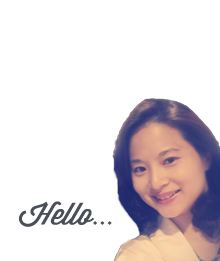M was the first Opthamologist that we visited for a diagnosis of K’s condition, while F was the second Opthamologist we consulted for a second opinion.
What triggered the need to get the second opinion? Here’s what happened;
M had many Optometrists and Opthalmic Technicians working with him and plenty of patients. His Optometrists were thorough, as K underwent at least 6 different eye tests which took them 1.5 hours.
The consultation session with M lasted an average of 10 minutes each visit. He did not do any tests and his diagnosis of K was largely dependent on the results that was given to him by his optometrists. I think with his high volume of patients, it got too tedious to do the eye tests himself.
He answered the queries hb and I posed during both visits and quickly explained his diagnosis and proposed treatment, and then passed us some literature to read up in detail about K’s eye condition.
K went through similar tests in our second visit and consulted with M, however, we went away feeling rather unsure despite having the M answer some new queries we had for him at the the second visit.
We were given the prescription for K’s glasses just moments before we paid at the reception area, and was surprised to see that the results from from this prescription deviated greatly from the results of our first visit. We left the clinic wondering if there could have been some mixed up.
When we finally got K’s new glasses, he struggled with blur vision from wearing the glasses, and that really got us wondering if the Optimetrists could have made an error with the prescription. I call M’s clinic, M’s Optimetrist retuned the call and explained to me that the higher degree was needed to correct the Ambloyopia in his left eye. She was not able to answer the question we had about his blurred vision with the glasses. That was when hb and I realized we needed to get a second opinion.
F had many patients too, but she did a vision test for K when we were in the consultation room, and did not solely depend on the tests results done by her Optometrist. Her consultation sessions lasted for close to 20 minutes each time, and there were two consultation sessions with her in that one visit with her. She thoroughly explain why K was given the recommended treatment by M and how she concurs with it. She went on to explain why K was given a higher prescription in his glasses which were needed to correct his Ambloyopia in his left eye and further demonstrated how the glasses can help. She pre-empted us (without being asked) that K might struggle with blur vision even with the glasses for about a week, so we needed to give it some time for his eyes to adjust to the vision.
F asked hb and I if we wanted to continue with M, or if we preferred to come back to her for K’s treatments. Hb and I glance at one another and replied in unison that we will be bringing K back to see her instead.
We were pleasantly surprised when we were presented with the bill at the counter, F’s consultation fee was approximately 30% the cost of M’s consultation fee, and that was when I felt major dissonance from our visits to M.

























